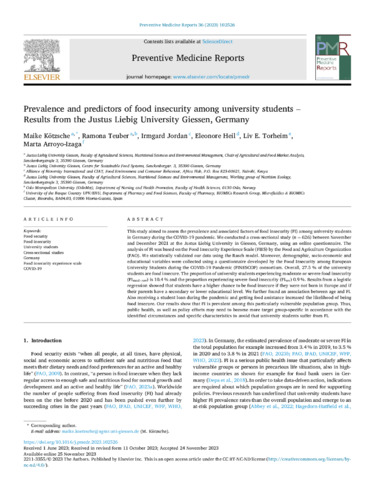Prevalence and predictors of food insecurity among university students – results from the Justus Liebig University Giessen, Germany
This study aimed to assess the prevalence and associated factors of food insecurity (FI) among university students in Germany during the COVID-19 pandemic. We conducted a cross-sectional study (n = 626) between November and December 2021 at the Justus Liebig University in Giessen, Germany, using an online questionnaire. The analysis of FI was based on the Food Insecurity Experience Scale (FIES) by the Food and Agriculture Organization (FAO). We statistically validated our data using the Rasch model. Moreover, demographic, socio-economic and educational variables were collected using a questionnaire developed by the Food Insecurity among European University Students during the COVID-19 Pandemic (FINESCOP) consortium. Overall, 27.5% of the university students are food insecure. The proportion of university students experiencing moderate or severe food insecurity (FImod+sev) is 10.4% and the proportion experiencing severe food insecurity (FIsev) 0.9%. Results from a logistic regression showed that students have a higher chance to be food insecure if they were not born in Europe and if their parents have a secondary or lower educational level. We further found an association between age and FI. Also receiving a student loan during the pandemic and getting food assistance increased the likelihood of being food insecure. Our results show that FI is prevalent among this particularly vulnerable population group. Thus, public health, as well as policy efforts may need to become more target group-specific in accordance with the identified circumstances and specific characteristics to avoid that university students suffer from FI.

